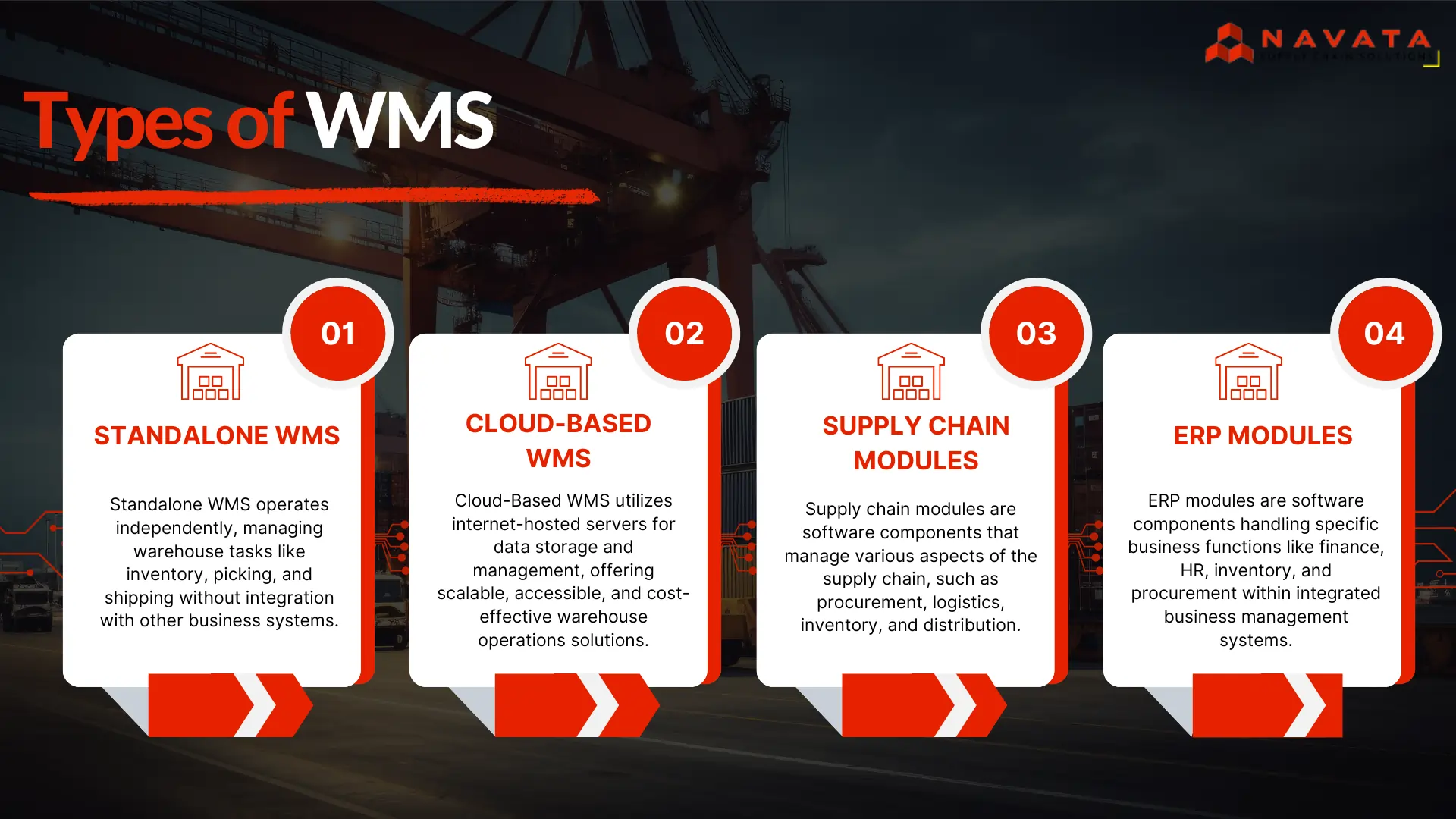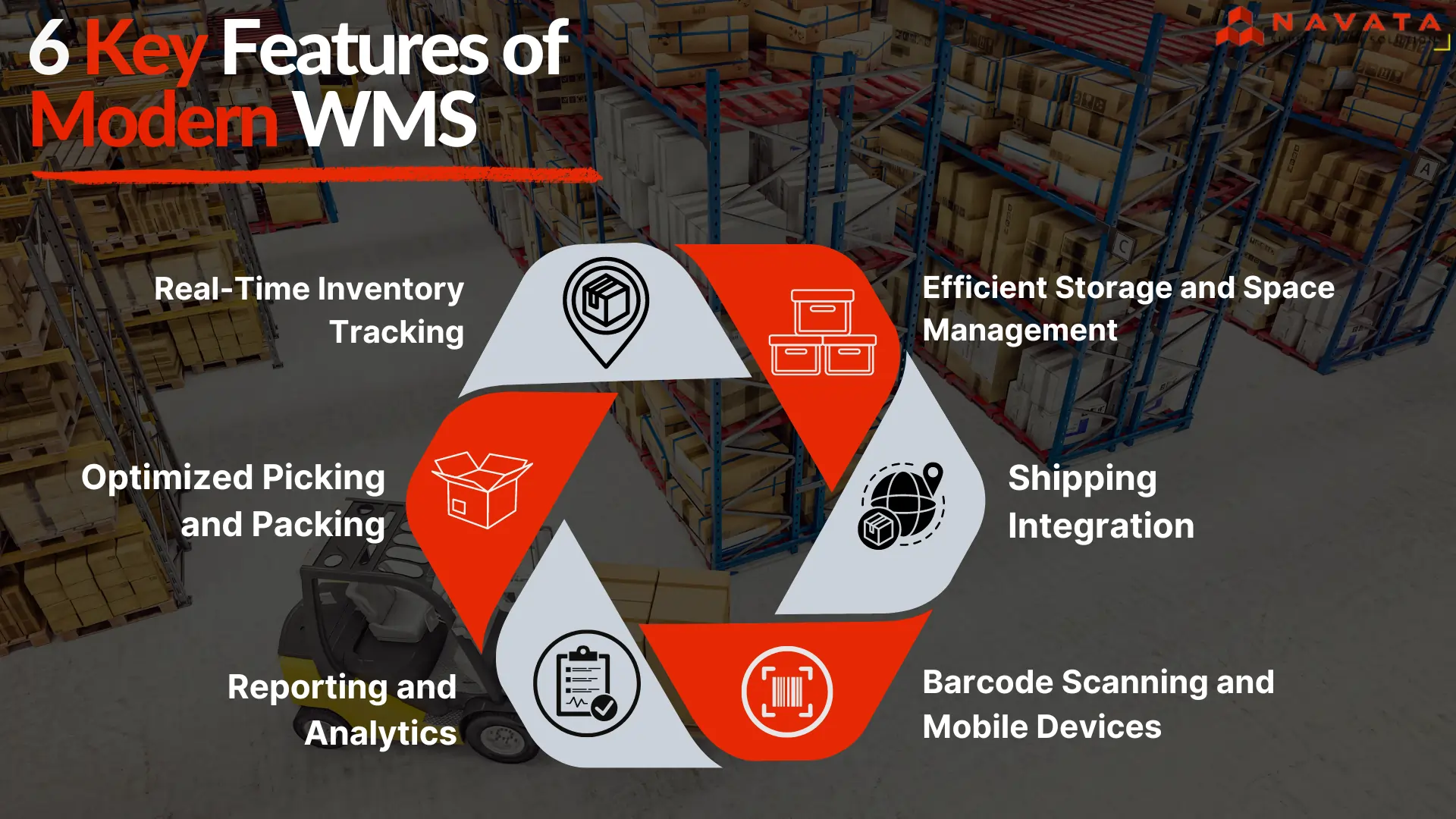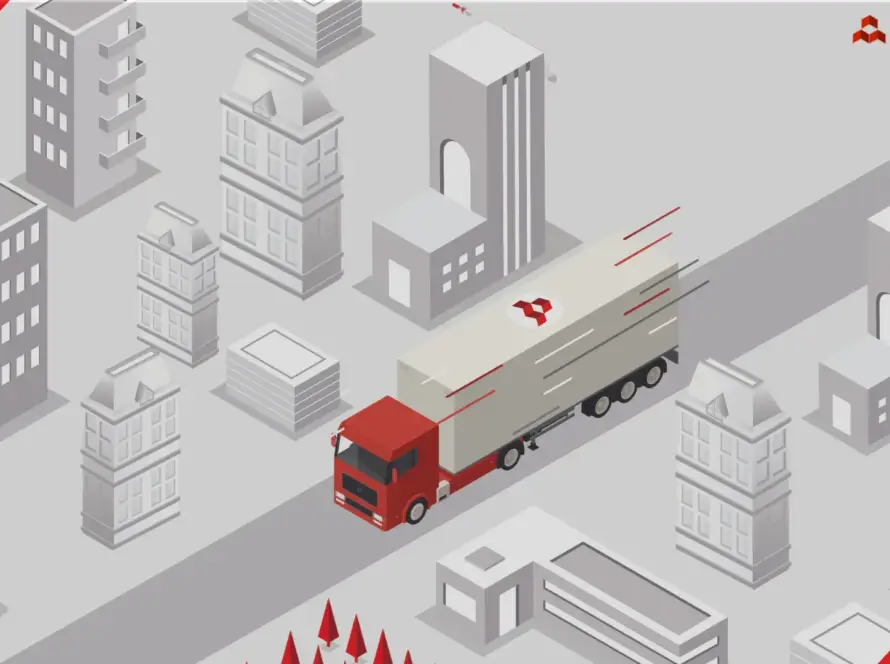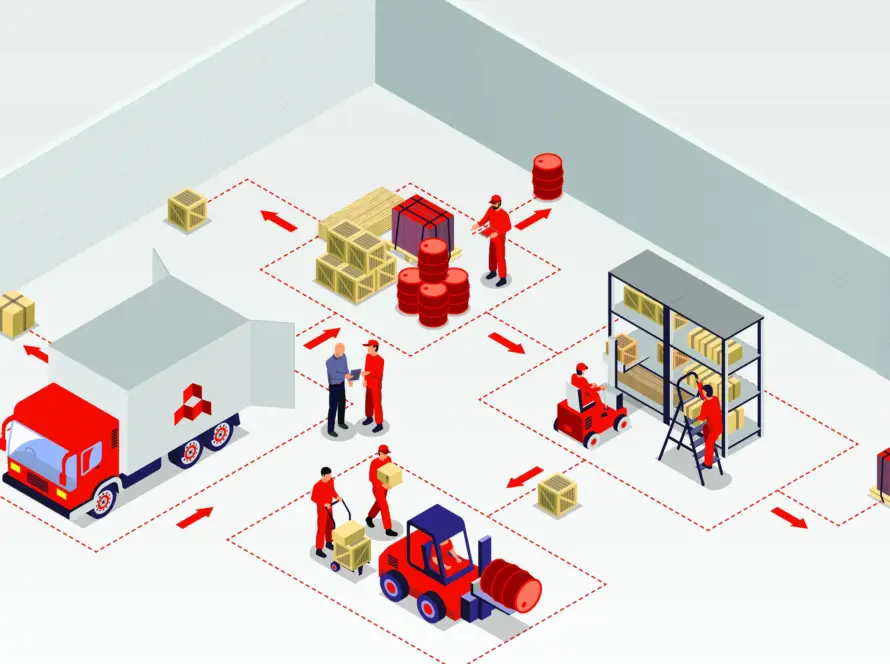What is Warehouse Management System (WMS)?
A Warehouse Management System (WMS) is a software application used to manage and control the day-to-day operations in a warehouse or distribution center. It helps organizations efficiently manage their inventory, storage, and movement of goods within the warehouse.
Think of a Warehouse Management System as the brain that controls everything inside a warehouse. It’s a software program that helps businesses keep track of where items are stored, how they move around, and when they need to be shipped out. A WMS is like having a super-organized librarian who knows the exact location of every book (or every item in your warehouse!)
Core Functionalities of a WMS
Receiving and Storing Goods
When new items arrive, the WMS helps workers know where to put them for efficient storage and easy retrieval later.
Tracking Inventory
The WMS acts like a giant inventory list. It knows exactly what you have in the warehouse, how much of each item, and where it’s located.
Picking and Packing Orders
When a customer places an order, the WMS creates the best route for workers to quickly find the items and pack them up neatly.
Shipping Orders
The WMS works with shipping companies to figure out the fastest and cheapest way to get orders to customers. It also prints all the necessary shipping labels.
Reporting and Data
The WMS collects a lot of information! It can tell you which items are selling well, if there are any bottlenecks in the process, and help you identify areas where you can save money and time.
You Might Also Like To Read: Advanced Warehousing Technologies: 5 Latest Trends

Types of Warehouse Management System
Warehouse Management System is essential software that streamlines your warehouse operations, from receiving new items to shipping them out to customers. But not all WMS systems are created equal! Let’s explore the different types to find the best fit for your business.
Standalone WMS
A Standalone Warehouse Management System is like a traditional software program you install on computers within your warehouse. It focuses specifically on warehouse tasks and might not connect directly with other business systems like accounting or order processing. This type of system offers in-depth features for managing warehouse operations and gives you full control. However, it can require upfront hardware and software costs, plus ongoing maintenance by your IT team.
Cloud-Based WMS
A Cloud-based Warehouse Management System is like renting space for your inventory data and management tools in a giant online storage center (“the cloud”). You access it through a web browser from anywhere. This system offers quick setup, no need to buy your own servers, and the provider handles updates and security. You usually pay a monthly subscription fee. On the downside, you have less control over customization and may rely on a strong internet connection.
Supply Chain Modules
This type of WMS is built into a larger supply chain management (SCM) software suite. The SCM handles a wide range of business activities, including warehouse management, transportation planning, and order management. A supply chain module provides a seamless view of your entire supply chain and helps coordinate activities beyond just the warehouse, but it can be more complex and expensive to implement than a standalone WMS.
ERP Modules
An ERP (Enterprise Resource Planning) system is software designed to manage all aspects of your business, including finance, HR, and of course, your warehouse! A WMS module within an ERP keeps inventory data closely connected to other business functions. This gives you a single source of data across your organization and can improve communication between departments. However, ERP systems tend to be large and complex, so implementation and customization can be time-consuming.
Which WMS is right for you?
The choice depends on factors like the size of your business, your IT budget, and how much integration you want with other systems. If you have any questions about these systems or need further advice, don’t hesitate to ask!

Key Features of Warehouse Management System
Real-Time Inventory Tracking: A modern Warehouse Management System knows exactly what’s in your warehouse and where to find it at any given moment. Think of it like a super-accurate map of your inventory that updates itself constantly.
Efficient Storage and Space Management: The WMS helps you make the most of your warehouse space. It figures out the best places to store things so they’re easy to find and your warehouse stays organized.
Optimized Picking and Packing: When orders come in, your WMS creates the fastest routes for workers to collect all the items and pack them securely for shipping. This means orders get to customers faster!
Shipping Integration: The WMS talks to shipping companies to find the best rates and print out labels with all the right delivery information. This streamlines the process of getting packages out the door.
Barcode Scanning and Mobile Devices: Workers use scanners and handheld devices to interact with the WMS. This lets them quickly check inventory levels, find items, and update order status – all without piles of paperwork!
Reporting and Analytics: A modern WMS collects lots of data about how your warehouse is running. It uses this to create reports that help you spot patterns, identify areas for improvement, and make smarter business decisions.
Bonus Features You Might Find
Automation Support: Some WMS systems can work with robots, conveyor belts, and other automated equipment to make warehouse processes even faster.
Predictive Analytics: Advanced WMS solutions might use fancy technology to predict future demand and suggest ways to prepare your warehouse for busy periods.
You Might Also Like To Read: 6 Latest Trends in Warehousing

Benefits of Warehouse Management System
Improved Inventory Accuracy: A WMS helps you track exactly what you have in stock, where it’s located, and when it needs replenishing. This reduces stockouts (running out of something a customer wants), overstocking (having too much of something), and costly errors.
Increased Efficiency: A WMS optimizes how things move in your warehouse. It cuts down on wasted time and effort by creating efficient picking routes, streamlining packing processes, and making it easier for workers to find the right items quickly.
Enhanced Labor Productivity: With clear instructions and less time spent searching, your warehouse workers can get more done in the same amount of time. This leads to happier staff and boosted overall productivity.
Better Space Utilization: A WMS helps you make the most of your warehouse space by suggesting optimal storage strategies. This means you can potentially store more inventory within your existing footprint or avoid needing to rent additional space.
Reduced Costs: All of the efficiencies gained through a WMS add up! You’ll likely see reduced labor costs, less waste from overstocking or mishandled items, and savings on shipping due to optimized packing and carrier selection.
Improved Customer Satisfaction: With faster order fulfillment, fewer errors, and better on-time delivery, your customers will be happier with their buying experience. This leads to repeat business and positive word-of-mouth.
Data-Driven Insights: A WMS collects tons of useful data. You can analyze this data for trends in customer demand, warehouse bottlenecks, and identify areas for continuous improvement, empowering you to make strategic business decisions.
Also Read: Warehouse Cost Reduction: 6 Practical Tips and Techniques
Make Supply Chain Your Competitive Advantage
Core Components of Warehouse Management System
Inventory Management: This is like keeping a really organized list of everything in the warehouse. It tells you what’s in stock, where it’s located, and how much of it you have. This helps avoid confusion and ensures you always know what’s available.
Order Management: Think of this as the system that helps handle customer orders. It makes sure the right items are picked from the inventory, packed correctly, and ready to ship to customers on time.
Receiving and Put-away: When new items come into the warehouse, this part of the system deals with getting them in and finding the best place to store them. It’s like finding the perfect spot on the shelf for each item.
Pick and Pack: This is about grabbing the right items from the shelves to fulfill customer orders. Once picked, these items are packed securely for shipping. It’s like making sure you have all the ingredients for a recipe before you start cooking.
Shipping and Manifesting: Once orders are packed, this part of the system takes care of arranging shipments and creating shipping labels and documents. It ensures everything is ready to go and gets to the right place on time.
Labor Management: This helps manage the workforce in the warehouse, making sure everyone is assigned tasks efficiently and working effectively. It’s like having a coach who organizes the team to play their best game.
Reporting and Analytics: This part provides insights into how the warehouse is performing. It generates reports and analysis to help managers make informed decisions about improving operations and meeting goals. It’s like having a scoreboard that shows how well the team is doing and where they can improve.
In conclusion, the future of warehouse management systems is marked by innovation, efficiency, and adaptability. By embracing emerging technologies, fostering collaboration, and prioritizing sustainability, WMS will continue to revolutionize warehouse operations, driving growth and competitiveness in the global marketplace.
Thanks For Reading: What is Warehouse Management System (WMS)?
Powered By 360Presence

